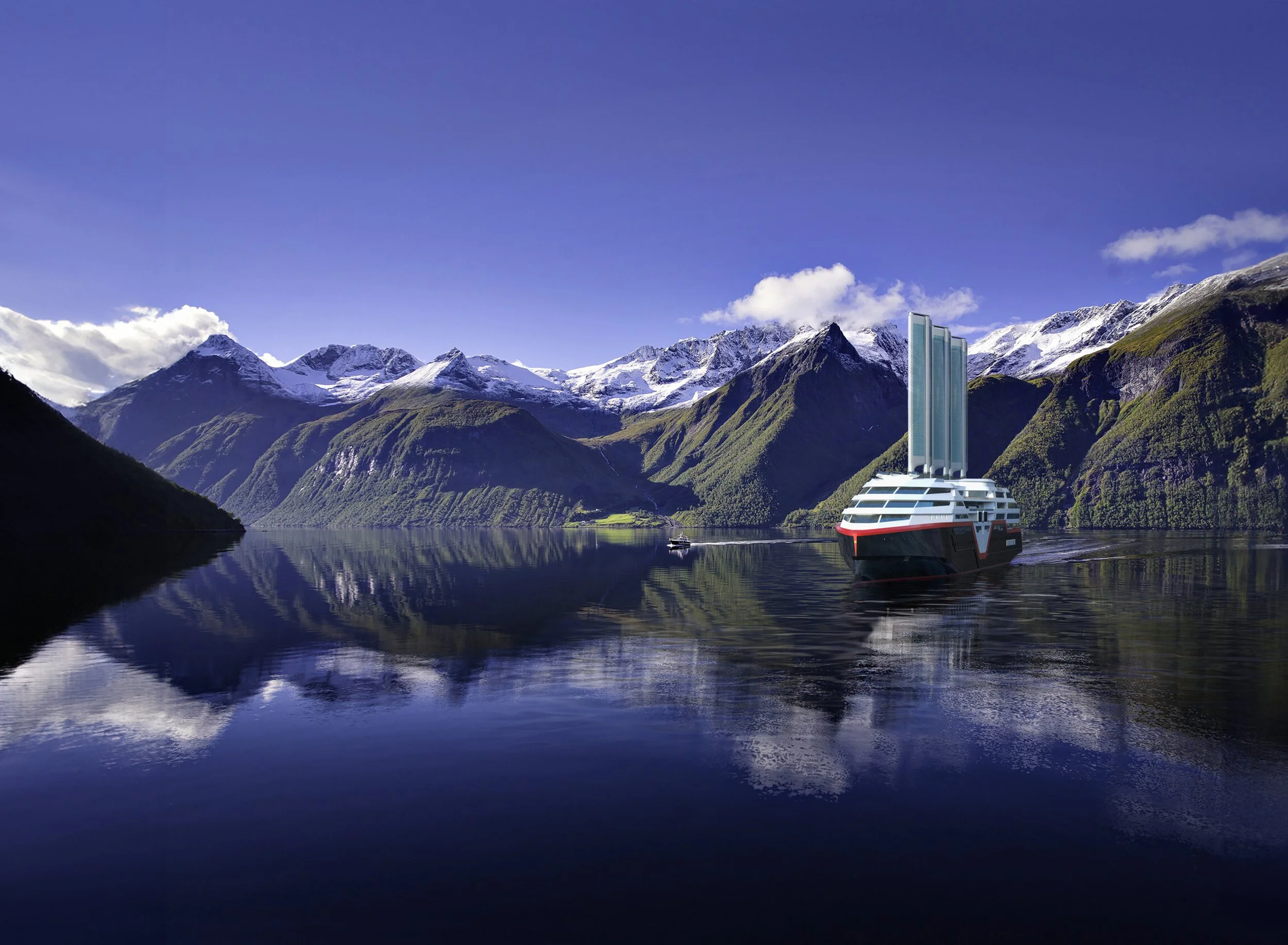Hurtigruten’s Bold Vision Aims for Zero-Emissions Cruise Ship by 2030
This rendering shows the Sea Zero cruise ship from Hurtigruten. The ship would have sails and other energy-reduction measures as part of the design, with hopes that such a ship could debut in 2030.
The cruise ship of the future is within sight, and Hurtigruten is leading the way toward a more-sustainable way to offer oceangoing travel.
Hurtigruten released its updated plans for its Sea Zero project, the zero-emissions ship scheduled to debut in 2030.
With the help of large batteries, sails, and other innovative solutions, this ship would be able to sail entirely emission-free during normal operation, while energy consumption could be reduced by 40 to 50 percent.
Hurtigruten initially announced plans for its Sea Zero project in 2022.
As the research-and-development phase has continued, a new set of renderings show the progress and ambition for the project.
It was developed in the Norwegian city of Ålesund by Vard, a designer and shipbuilder and one of Hurtigruten’s key partners in the Sea Zero project.
The ship integrates several innovative solutions created in collaboration with partners from the Norwegian maritime industry.
Sea Zero is one of several industry-leading projects from Hurtigruten that focuses on sustainable travel and industry solutions. Earlier this year, the cruise line announced its initiative aiming to reduce edible food waste to zero. The company also is going through an upgrade to its fleet that includes several ships becoming battery-hybrid-powered and state-of-the-art technology that will significantly reduce both CO2 and Nitrogen oxide (NOx) emissions by 25 percent and 80 percent, respectively.
“… It is crucial that we now take major steps to reduce emissions,” Hurtigruten CEO Hedda Felin said. “Our goal is to have an emission-free ship in operation by around 2030.”
Here are some of the key design features of Sea Zero.
Sails Can Be Raised and Lowered
Sea Zero project rendering from Hurtigruten.
One of the most exciting elements is the sails, which can be raised and lowered as needed. Preliminary estimates indicate that the sails could reduce energy consumption by around 10 percent over time. Additionally, solar panels will contribute another 2 to 3 percent in energy savings.
“We still see significant energy savings from having retractable sails with solar panels, but this requires thorough studies, including model tests to be conducted in the coming months. We have also changed the sail type to a more mature design already in use on cargo ships,” said Gerry Larsson-Fedde, chief operating officer of Hurtigruten.
The type of sail being investigated is called OceanWings. These French-developed sails are already in use on the cargo ship Canopée.
“As with all development projects, there will be adjustments to both the design and specifications along the way,” Larsson-Fedde added.
Technical Innovations
The ship designs call for contra-rotating propellers as the main propulsion, and the batteries will have a capacity of around 60 megawatt-hours. Two retractable thrusters at the stern will ensure optimal maneuvering during port operations and provide increased safety through redundancy.
“The central part of the project is to reduce energy consumption. The goal is to use significantly less energy than today's ships, which requires innovative solutions,” Larsson-Fedde said.
Another measure is air lubrication of the hull, during which air bubbles are pumped beneath the hull to reduce drag. This can provide energy savings of 5 to 10 percent. Combined with modern hull design, advanced anti-fouling coatings and regular hull cleaning, water resistance can be significantly reduced. Preliminary results also show that better ventilation and insulation systems, as well as advanced energy management, can lead to significant energy savings.
So-called “smart cabins” would allow cruisers to control their energy usage.
You would be able to control heating and ventilation through an app and a screen in the cabin, while also seeing how much energy is being used. This will increase travelers’ awareness of sustainability.
“We are already testing advanced sensors in these cabins, and in the near future, we will conduct full-scale tests with guests onboard,” Larsson-Fedde said.


